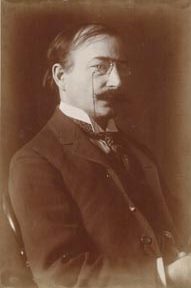
Henri Beau, born Louis-Henri Beau on June 27, 1863, in Montreal, Quebec, stands as a significant yet often overlooked figure in Canadian art history. Known for his Impressionist landscapes and historical paintings, Beau's artistic journey was shaped by his education under some of the most renowned French masters of the 19th century. Despite his talent and early success, Beau's long absence from Canada contributed to his relative obscurity in the art world. It was only decades after his death that his work received the recognition it deserved.
Early Life and Education
Henri Beau was born into a working-class family, the third of eleven children of restaurateur Charles-Arsène Beau and Marguerite-Clémentine Hupé. Raised in a boarding house in Montreal, Beau was baptized at the historic Notre-Dame Basilica a day after his birth. His family's modest means meant that Beau had to work diligently to pursue his passion for art.
Beau's early artistic training began under Abbé Joseph Chabert at the Institut National des Beaux-Arts, Sciences, Arts et Métiers et Industrie in Montreal. In 1884, he traveled to the United States, working in San Francisco before moving to Paris to continue his studies. In Paris, Beau studied under prominent artists such as Joseph Chabert, Léon Bonnat, William-Adolphe Bouguereau, Jean-Léon Gérôme, and Pierre Puvis de Chavannes. This illustrious tutelage laid the foundation for Beau's development as an Impressionist painter, a movement that profoundly influenced his style.
Artistic Career and Style
Henri Beau's early career in Paris saw him gain initial success as an Impressionist painter. He participated in exhibitions and received commissions that allowed him to sustain himself financially. Notably, he received a commission from the Notre-Dame Basilica in Montreal to create the painting Les Noces de Cana in 1893, which was unfortunately destroyed in a fire in 1978. Beau's work often depicted historical and religious themes, as well as landscapes, showcasing a delicate balance between realism and impressionism.
In 1902, Beau received a significant commission from the Government of Quebec for the painting L'arrivée de Champlain à Québec, which depicted the arrival of Samuel de Champlain in Quebec. This work, delivered in 1903, was later criticized for historical inaccuracies but remains a notable piece in his oeuvre.
Beau's artistic style evolved throughout his career. Initially influenced by the Impressionist movement, his later works became more structured, particularly during his tenure at the Public Archives of Canada (now Library and Archives Canada) in Paris. From 1915 to 1938, Beau worked as an associate archivist, documenting traditional civil, military, and religious customs related to Canadian history. This role, while prestigious, may have constrained his creative expression, as it required him to focus on specific historical and political themes.
Legacy and Rediscovery
After his death on May 15, 1949, in Paris, Henri Beau's widow, Marie Beau, and a few friends sought to establish his reputation as an artist in Canada. Despite these efforts, Beau remained relatively unknown until the late 20th century. In 1974, the Galerie Bernard Desroches in Montreal held a major retrospective of his work, followed by another at the Musée du Québec (now Musée national des beaux-arts du Québec) in 1987. These exhibitions played a crucial role in reviving interest in Beau's art and securing his place in Canadian art history.
Today, Beau's work is celebrated for its contribution to the Impressionist movement and its reflection of Canadian cultural and historical themes. His paintings, characterized by their vibrant colors and expressive brushwork, continue to captivate audiences and offer a glimpse into the artistic and cultural milieu of his time.
Browse our collection of Canadian paintings for sale at the Canadian Classic Fine Art gallery, The best place to buy a painting online. We provide free shipping anywhere in Canada and the United States. Our Montreal art gallery sells paintings online exclusively and have a 14 days return policy.
